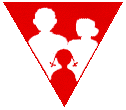

The cesarean procedure (C-section) is a procedure where a cut is made in a woman’s abdomen and Uterus to deliver her baby. This procedure has been reported to have been performed for several centuries, but has become safer from the mid-twentieth century onward with the developments in medical care and technology. Currently, this procedure is resorted to where there is reason to believe that it is necessary for the well-being of the mother and the child or in cases where it is a life-saving measure.
Why cesarean?
There are several reasons for performing a C-section—emergency situations or elective situations. It is important that one realizes that C-section is an alternative option to vaginal delivery. This alternative option is exercised based on the health status of the mother and child at the time of labor. Hence, the outcome of a normal pregnancy can be achieved either through a vaginal delivery or a C-section.
What do you need to know about this surgery?
There has been a steady increase in the rate of C-sections conducted worldwide and this has been linked to the availability of better diagnostic tests as well as improved outcome of otherwise complicated pregnancy conditions. You will not need to worry about pain as the entire procedure will be under Anesthesia. You can even discuss your preferences regarding Anesthesia with your doctor.
Reasons for the procedure
As detailed earlier, the indications determine the type of surgery performed. These indications can broadly be classified into maternal and fetal indications, even though there are cases where both types of indications are present. Any abnormality detected during routine antenatal check-ups or at the time of labor would be investigated properly and discussed with the patient and her relatives prior to opting for the surgery. In such circumstances, the patient would need to have certain investigations done beforehand.
The procedure
The procedure takes about 30 min from the time the patient is shifted to the operation theater. But, duration to recovery and regaining of consciousness depends on the type of Anesthesia that you have opted for. Usually if the surgery is not a true emergency, regional Anesthesia can be opted for. Regional Anesthesia includes spinal and epidural Anesthesia and lets the mother participate in the process of birth and she can even see her baby immediately after he/she is born.
Click here to view an animation on C-section.
After...
After the procedure, the mother will usually be semi-conscious or on her way to full consciousness within a short while. The baby can be put to her breast to attempt breast-feeding depending on the status of the baby and the mother. If initial attempts at breast-feeding are not very successful, there is no cause for worry as the physiological changes that the body needs to start producing milk may be a little delayed in view of not having gone through the entire process of labor as well as the strain of having to recover from the surgery. Even if the mother is unable to sit up or support herself, there will be plenty of assistance in helping to hold the baby and she can even try breast-feeding in the lying down position. The tube that was collecting urine will be removed within a few hours after delivery or by the next morning, and the mother is encouraged to walk with assistance from the next day of the surgery. This will be monitored carefully and will be under cover of analgesics so that the mother is not subjected to unnecessary pain or discomfort.
Recovery
The time to complete recovery following C-section is a little longer than following vaginal delivery. This is because the abdominal muscles that have been cut during the surgery take longer to heal and may affect the ability to carry heavy weights or indulge in activities that require more strain on these muscles. However, the mother will be able to hold her baby, care for him or her, and care for herself.
Finally
A focus on regaining earlier muscle tone, avoiding infection, and reducing pregnancy weight should be foremost in regard to the mother’s health. Caring for the baby will also sap a lot of strength and will need a healthy balanced diet with emphasis on proteins, vitamins and other micronutrients. In addition, there need not be worry that the next childbirth will also invariably be a cesarean. There is an increasing trend of vaginal deliveries following C-section with an improvement in medical care and imaging advances.
Know About Pregnancy
Healthy Pregnancy
Fertility basics
Planning for pregnancy
Want a smart baby?
Pregnancy health
Eating For Two
Your growing baby
Exercise in pregnancy
Benefits of exercising,Recommended exercises
Pregnancy Weight Gain
Sex During Pregnancy
Travel During Pregnancy
Stress in pregnancy
High Blood Pressure
Diabetes In Pregnancy
Labor
C-section
New mother care
Healthy Breast Feeding
Postpartum depression
Stretch marks
Diet during Breast Feeding
Birth Control choices
A Pill In Time
Miscarriage
Home/Divya Hospital




